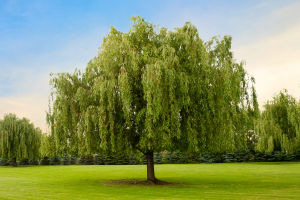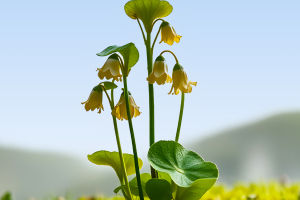In the heart of dense forests, there's a quiet kind of care going on beneath our feet—between trees. Scientists have discovered something truly fascinating: some large, old trees act like mothers, feeding and protecting younger trees through an underground network.
These trees are often called "mother trees" or "nursing plants." The idea sounds almost magical, but it's based on solid science. Let's explore what makes these plants special and how they were discovered.
What exactly are "mother trees"?
"Mother trees" are typically the biggest and oldest trees in a forest. They have wide root systems and access to deep resources that younger trees can't reach. But what makes them truly unique is how they share nutrients, water, and chemical signals with surrounding plants—especially saplings. This isn't something we can see with the unaided eye, but underground, a network of fungi connects the trees like an internet. This is called the mycorrhizal network.
How do they feed other trees?
The roots of the mother tree are linked to tiny thread-like fungi, which form a mutual partnership—the fungi help the tree absorb nutrients, and the tree provides sugars in return. These fungal threads can stretch for meters underground and connect to the roots of smaller trees. Through this network, mother trees can send carbon, nitrogen, and water to younger or weaker trees nearby, especially during times of drought or poor sunlight.
How were mother trees discovered?
The idea of plant communication used to sound far-fetched, but that changed thanks to forest ecologist Suzanne Simard. In the 1990s, she ran a series of experiments using carbon isotopes to trace how nutrients moved between trees. Her research showed that trees are not isolated—they're connected and even cooperative. Older trees were not only sharing nutrients but also recognizing their own seedlings and sending more resources to them compared to unrelated plants.
Why does this matter for forests?
Mother trees play a critical role in keeping forests healthy. They help seedlings survive, especially in crowded or shaded areas. They can even send out warning signals—if one tree is attacked by pests, it can send out chemicals to alert others nearby through the same underground network. This kind of support helps forests grow stronger together, rather than competing against one another.
Do all forests have mother trees?
Mother trees are more common in older, undisturbed forests, where large trees have had decades to develop connections. In young or heavily logged forests, the network is weaker or missing altogether. That's why clear-cutting can be so harmful—it doesn't just remove trees, it destroys the underground communication system. Without mother trees, new generations of plants lose the guidance and support they need to thrive.
Could this change how we manage forests?
Yes! Forestry experts are starting to rethink how we plant and cut trees. Instead of clearing everything, some forests are now managed by keeping key mother trees in place. These trees act as anchors for new growth, making reforestation faster and more successful. It's a powerful reminder that nature often works best through connection, not isolation.
There's more to a forest than meets the eye
Next time we walk through a forest, we might think of it differently. It's not just a group of trees growing side by side—it's a living, talking community, where old trees help raise the young and ensure the survival of the whole. These mother trees might not move or speak, but their actions keep entire ecosystems alive.
Have you ever met a "mother tree"?
Maybe you've stood next to a towering tree that felt ancient, wise, or quietly powerful. What if it's more than just big—it's also busy helping the forest around it? Let us know if you've seen an old-growth forest or learned about tree communication before. The more we know, the more we can protect these silent caretakers of the woods.


